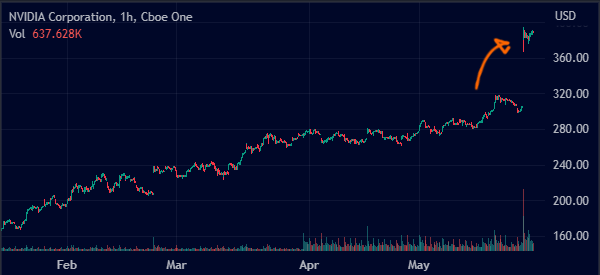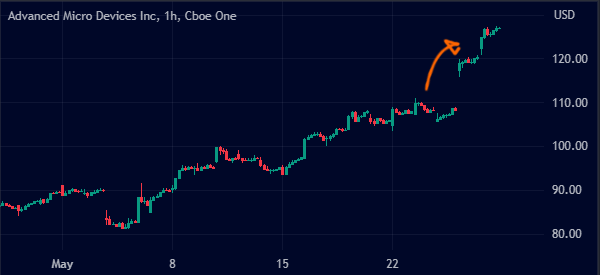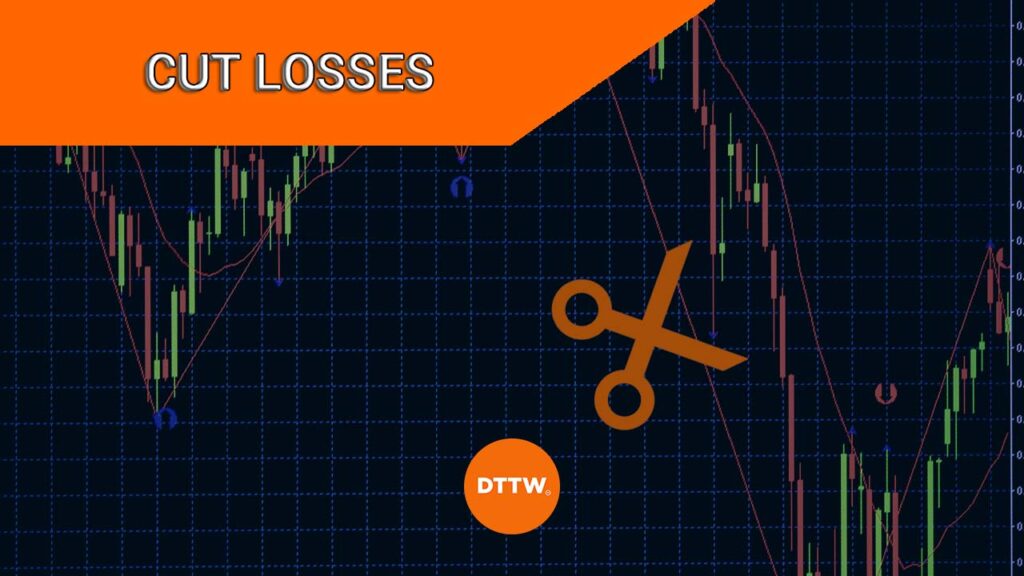Day trading is a process where a person allocates funds to financial assets like stocks, cryptocurrencies, commodities, bonds, and exchange traded funds (ETFs) for short-term gains.
The goal of any day trader is to have all trades to be profitable. However, in most cases, some of these trades are usually not profitable. In this article, we will look at the concept of cutting losses and how to do it well.
What does cutting losses mean?
As a day trader, your goal is to ensure that your trades are profitable. However, in most periods, this is usually not the case. Historically, most traders tend to open loss-making trades. Therefore, cutting losses is a process where a trader or investor decides to close a trade that is in the red.
For example, in the chart below, we see that Nvidia shares have been rising for months. Assume that you believed that the stock was overvalued and then you decide to place a short trade at $289. In this case, your goal is to benefit as the stock pulls back.


However, as you can see, the stock jumped sharply after the company announced strong financial results. The stock moved from $300 to about $390.
In this case, you could decide to continue holding the short position or to cover it. If you decide to close the short position, it means that you have just decided to cut your losses.
The benefit of cutting losses is that it helps to reduce the possibility of a trader losing a lot of money.
In the example above, a trader who placed a short trade at $290 and cut losses at $310 would have saved a lot of money since the stock soared to almost $400.
Reasons to cut your losses
There are several reasons why you might want to cut your losses when day trading:
When there is new information
In most periods, there is usually a reason when you are entering a trade. For example, you might buy a stock expecting that it will publish strong financial results. In other periods, you might enter a trade hoping that a new product launch will be received well by the market.
Related » Buying & Selling Points Explained
In some cases, the market will not always go in line with your expectation. For example, a company can publish worse results than you had expected, pushing the shares lower.
In this period, it means that you will do much better by cutting your losses as early as possible to prevent further losses.
When a technical pattern has been invalidated
Day traders rely on technical patterns to make decisions. These patterns are divided into reversals and continuations. Examples of popular patterns to use in day trading are:
- double-top
- double-bottom
- head and shoulders
- cup and handle
- rising and falling wedges
In some cases, you might open a trade because of a pattern, which is then invalidated soon. For example, in the chart below, we see that AMD stock formed a double-top pattern at $102.11.
In price action analysis, this pattern is usually a bearish sign. However, as we see below, the shares made a bullish breakout above the double-top level.


Therfore, as a responsible trader, the wise thing was to exit the trade and cut your losses since by breaking out, the shares brought the next resistance point at $164.32 to view.
Towards the end of the trading day
The other reason why you may want to cut your losses is towards the end of the trading day. An important rule as a day trader is to ensure that all your trades are closed when the market closes.
In this case, if a trade is in a loss-making category, it is recommended that you just close it. The risk of holding a trade overnight is that there could be a huge gap when the market opens the following day.
Why traders avoid cutting losses
Cutting losses is never fun. In fact, historically, we have seen several well-known investors do just that.
For example, Bill Ackman had to take a big loss a few years ago by closing his Valeant Pharmaceuticals trade. Still, there are several reasons why traders avoid cutting losses.
Hoping for a turnaround
The most important reason why most traders avoid cutting losses is that they are hoping that the asset will have a turnaround soon.
For example, if you are long a stock that is falling, you might hope that it will change direction. While this can happen in certain times, the losses can continue mounting.
Overconfidence
The other important reason why you may avoid cutting losses is that you are overconfident about the trade.
For example, you might buy a stock because you strongly believe that it will continue rising. If things change, you might still be highly confident in it.
Strategies to help you avoid cutting losses
There are several strategies that will help you avoid cutting losses. First, always use a stop-loss or a take-profit when day trading.
A stop-loss will stop your trade automatically when it reaches a certain loss level while a take-profit will stop it when it reaches a profit level. You should always set the two when you are opening the trade.
Second, always be informed by having access to the most recent news about an asset. For example, when you are long a stock like Apple, new information can come up. As a result, you should always be informed about what is happening.
Third, always embrace good position sizing to ensure that you don’t make more losses in a trade. In line with this, ensure that you use moderate leverage on all your trades.
Summary
In this article, we have looked at the concept of cutting your losses when day trading. While it is always a difficult thing to cut losses, doing so early enough will help you avoid more losses.
We have also looked at some of the best strategies to use when cutting losses and assesssed some of the top reasons why you might consider cutting losses.
External useful resources
- Still The No. 1 Rule For Stock Market Investors: Always Cut Your Losses Short – Investors
